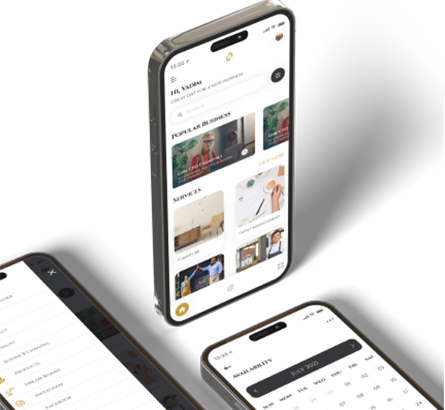In today’s digital age, mobile applications have become an integral part of our lives. From ordering food to shopping online, there seems to be an app for everything. One such useful app is a barcode scanner app, which allows users to quickly and conveniently scan barcodes to obtain product information. If you’re interested in developing a barcode scanner app for Android and filling it with around 1500 items, this comprehensive guide will walk you through the process step by step.
In this section, we will provide a brief overview of the article, introducing the concept of a barcode scanner app for Android and the purpose of creating one with a substantial database of 1500 items.
Understanding Barcodes
Here, we will delve into the basics of barcodes, explaining their significance in retail and inventory management. We will discuss the different types of barcodes, such as UPC, EAN, and QR codes, along with their specific uses and advantages.
Planning Your Barcode Scanner App
Before diving into the development process, proper planning is crucial. This section will guide you through the essential considerations when conceptualizing your barcode scanner app. We will cover aspects like defining the target audience, identifying key features, and outlining the app’s workflow.
Setting Up the Development Environment
To develop an Android app, you need the right tools. In this section, we will walk you through the process of setting up the development environment, including installing Android Studio, the official IDE for Android app development. We will also discuss the importance of SDK versions and how to configure them.
Designing the User Interface
A well-designed user interface plays a vital role in enhancing the user experience. Here, we will explore the principles of good app design and guide you in creating an intuitive and visually appealing user interface for your barcode scanner app.
Implementing Barcode Scanning Functionality
The core functionality of your app lies in its ability to scan barcodes accurately. In this section, we will explain how to utilize the camera of an Android device to capture barcode images and process them using barcode scanning libraries or APIs. We will also address the potential challenges and provide tips for reliable scanning.
Integrating a Barcode Database
To retrieve product information based on scanned barcodes, you need to integrate a barcode database into your app. We will discuss various options for acquiring and managing a barcode database, including using public APIs, leveraging existing databases, or creating your own.
Filling the App with 1500 Items
This section will outline strategies for populating your app with approximately 1500 items. We will explore methods like manual entry, importing from CSV files, or leveraging web scraping techniques. Additionally, we will address considerations for organizing and categorizing the items within the app.
Testing and Debugging
Before launching your app, thorough testing and debugging are essential to ensure a smooth user experience. Here, we will discuss different testing approaches, including unit testing, integration testing, and user acceptance testing. We will also explore debugging tools andtechniques to identify and fix any issues or errors.
Optimizing the App for Performance
A well-performing app is crucial for user satisfaction. In this section, we will provide optimization tips to enhance the speed, responsiveness, and overall performance of your barcode scanner app. We will cover areas like image processing, database queries, and memory management.
Deploying the App
Once your app is fully developed and tested, it’s time to deploy it to the Google Play Store. This section will guide you through the process of preparing your app for release, including signing the APK, creating app listings, and optimizing keywords and descriptions for better discoverability.
Conclusion
In conclusion, creating a barcode scanner app for Android and populating it with about 1500 items requires careful planning, development, and testing. By following the steps outlined in this article, you can build a robust and efficient app that enables users to scan barcodes and access relevant product information seamlessly.
FAQs
1. Can I create a barcode scanner app without coding experience? Yes, there are barcode scanning SDKs and libraries available that provide ready-to-use components for barcode scanning functionality, allowing you to build an app without extensive coding knowledge.
2. How can I ensure accurate barcode scanning results? To ensure accurate scanning results, make sure the camera is focused properly, and there is sufficient lighting. Additionally, using high-quality barcode scanning libraries or APIs can improve the accuracy of barcode recognition.
3. Can I import barcode data from an existing inventory management system? Yes, if you have an existing inventory management system, you can export the barcode data in a compatible format such as CSV and import it into your barcode scanner app.
4. How can I categorize and organize the 1500 items within the app? Consider using categories, tags, or filters to organize the items within your app. This allows users to easily navigate and search for specific products.
5. Is it possible to update the app with new products in the future? Yes, you can implement a mechanism within your app to update the product database periodically. This can be done through manual updates or by integrating an automated data synchronization process.









